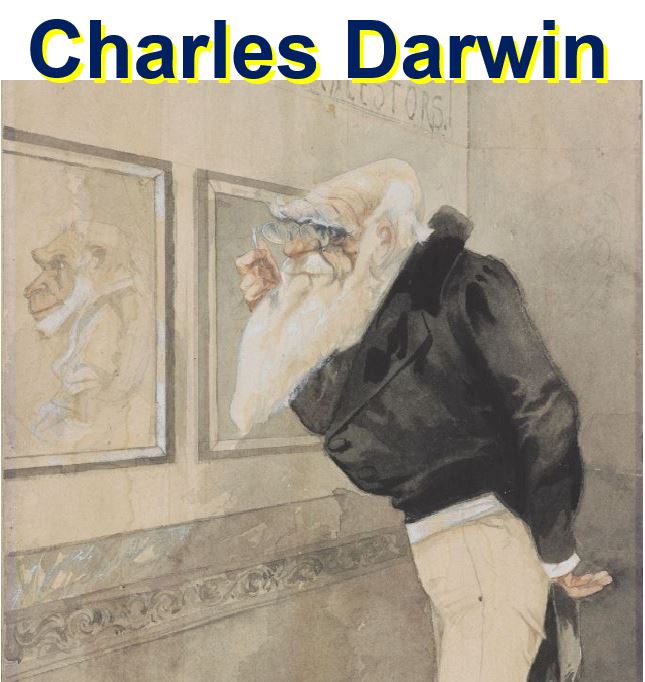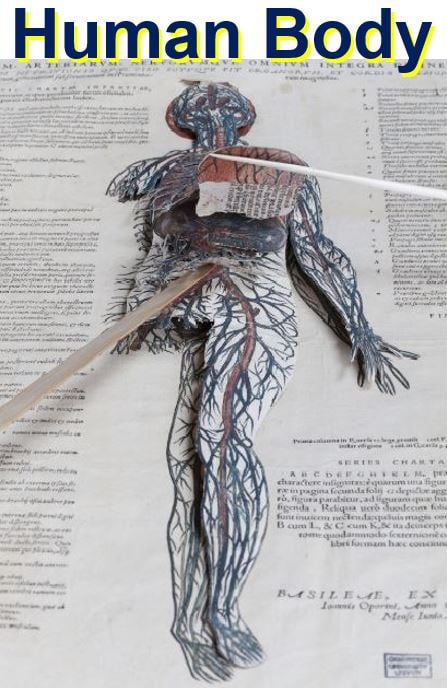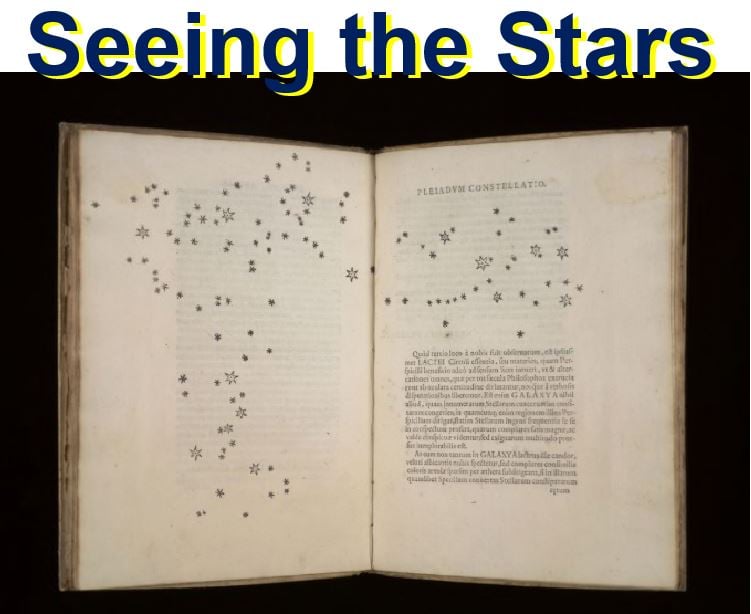A new display by Cambridge University Library, celebrating its 600th birthday, has fascinating Darwin and Newton pages as well as a new picture of Professor Stephen Hawking. Along two long tables, propped up so they can be viewed from nearly every angle, are some of the greatest literary works in the world.
The objects on display are usually stored under glass in atmospherically-controlled conditions. Today they are out in the open air for all to see, and even touch if you are incautious enough.
Cambridge University Library (UL), a treasure-house of several million books and other objects, is six centuries old this year. Its birthday is being celebrated with a spectacular free exhibition – Lines of Thought – which opens of Friday, 11th March.
 Darwin in the ‘Gallery of Ancestors’. Charles Darwin’s theory of evolution through natural selection is fundamental to our understanding of human development. A French artist who escaped to England from the Paris Commune in 1871 painted this caricature of Darwin. (Image: exhibitions.lig.cam.ac.uk)
Darwin in the ‘Gallery of Ancestors’. Charles Darwin’s theory of evolution through natural selection is fundamental to our understanding of human development. A French artist who escaped to England from the Paris Commune in 1871 painted this caricature of Darwin. (Image: exhibitions.lig.cam.ac.uk)
Started off with two wills in 1416
On display are the wills of William Lorin and William Hunden, both proved on March 1416 – exactly six hundred years ago – bequeathed books to ‘the common library of all scholars of the University’.
Over the course of the past six hundred years, the Library’s collections have grown from just a few dozen volumes on a handful of subjects into a remarkable accumulation of over eight million journals, books, manuscripts and maps, enhanced by an ever-expanding range of electronic resources.
From its beginnings as an asset for a small community of theologians and canon lawyers in the medieval university, the Library’s mission has expanded to serve the scholarly community across the world, and now, through its digitization projects, to reach new audiences globally.
 The Gutenberg Bible (c. 1455) was the first substantive work to be printed in Western Europe using moveable type. The Bible lit the fuse of an explosion in printing, which enabled ideas to spread rapidly across the continent and then around the world. (Image: exhibitions.lib.cam.ac.uk)
The Gutenberg Bible (c. 1455) was the first substantive work to be printed in Western Europe using moveable type. The Bible lit the fuse of an explosion in printing, which enabled ideas to spread rapidly across the continent and then around the world. (Image: exhibitions.lib.cam.ac.uk)
More than 4,000 years of human thought
To celebrate is 600th birthday, the free exhibition will feature some of the University’s most iconic treasures and influential works, spanning over 4,000 years of human thought and investigations through six distinct themes on how both Cambridge and its collections have influenced the world.
The display includes a little clay tablet with inscriptions on it called cuneiform, a system of writing developed over 5,000 years ago by the ancient Sumerians. It is the oldest item in the library.
Darwin, Shakespeare, Halley, Newton & Hawking
The exhibition also includes the colossal Gutenberg Bible, the book that started the printing revolution, created in 1455. There is also the first edition of Darwin’s On the Origin of Species, as well as the world’s longest poem The Shahnamah, an ingenious 16th century book by Vesalius, which let the reader build a pop-up manikin revealing the workings of the human body.
 Insights into the human body – Epitome of the 7 books on the fabric of the human body. Andreas Vesalius in 1543 transformed the study of the human body with his work based on dissections he undertook as a medical lecturer in Padua. The 3D manikin in the image above was made by the user of the book, who was instructed to cut out the individually printed organs and then glue them together. (Image: exhibitions.lib.cam.ac.uk)
Insights into the human body – Epitome of the 7 books on the fabric of the human body. Andreas Vesalius in 1543 transformed the study of the human body with his work based on dissections he undertook as a medical lecturer in Padua. The 3D manikin in the image above was made by the user of the book, who was instructed to cut out the individually printed organs and then glue them together. (Image: exhibitions.lib.cam.ac.uk)
On display, you can also see the earliest reliable text for twenty of Shakespeare’s plays.
A 1682 notebook and sketches by Edmund Halley of Halley’s Comet will be viewable, as well as Stephen Hawking’s draft typescript of A Brief History of Time. Nearby, you can also see the Principia Mathematica, in which Sir Isaac Newton expounded the law of gravity.
The Library holds more than 95% of Darwin’s surviving manuscripts. The exhibition also shows how the revolutionary discoveries in the structure of DNA evolved, including the mapping of the human genome.
The Cambridge University Library building is relatively modern – designed and built in the 1930s.
 Galileo Galilei was the first to use the newly invented telescope to study the stars with more than the power of just the naked eye. What he published challenged doctrine about the Universe. He confirmed Copernicus’ view that the Sun is the centre of our Solar System, and came into conflict with the Church. (Image: exhibitions.lib.cam.ac.uk)
Galileo Galilei was the first to use the newly invented telescope to study the stars with more than the power of just the naked eye. What he published challenged doctrine about the Universe. He confirmed Copernicus’ view that the Sun is the centre of our Solar System, and came into conflict with the Church. (Image: exhibitions.lib.cam.ac.uk)
Cambridge News quoted University Librarian Anne Jarvis, who said:
“It’s extraordinary to think that the library, which started in 1416 as a small collection of manuscripts locked in wooden chests, has now grown into a global institution housing eight million books and manuscripts, billions of words, and millions of images, all communicating thousands of years of human thought.”
The library has also released a new picture of Professor Stephen Hawking, taken with Principia.
Head of rare books at the library, Dr. Emily Dourish, said:
“There are six lines of thought featured – revolutions in human communication, from clay tablets to Twitter, the evolution of genetics from Darwin to DNA, religious writings, understanding gravity, telling the story of history, and illustrating anatomy.”
“Some of the treasures have not been displayed before, and they cover the spread of writing, from people scratching on animal bones right up to the present day.”
The exhibition is also being reproduced online so that anybody anywhere in the world can also enjoy it.
Video – Cambridge University Library’s priceless treasures
